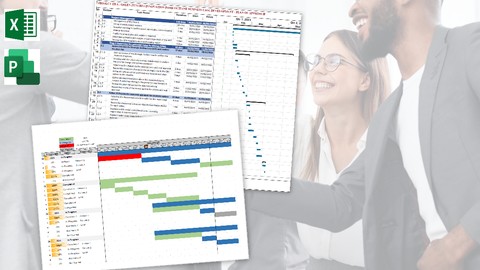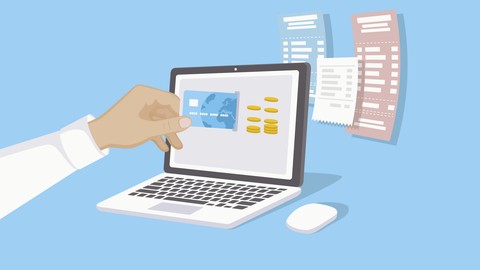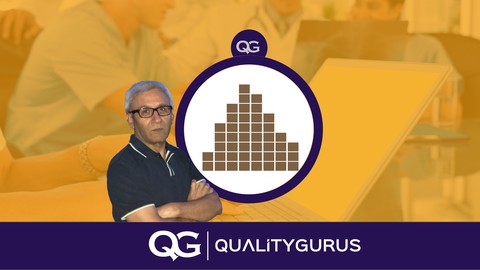Risk Management Professional (RMP)
Loại khoá học: Project Management
40 PDU PMI RMP Certificate Exam Prep by the SRM, PMBOK7 and PMBOK6
Mô tả
Welcome to the Risk Management Certification Program (PMI-RMP). The Program is SRM, PMBOK6 and PMBOK7 aligned and includes the courses on Planning Risk Management, Identifying Risk, Analyzing Risk and Responding to Risk.
This course based on the Standard for Risk Management in Portfolios, Programs, and Projects (SRM), the Project Management Body of Knowledge (PMBOK) Guide – Sixth Edition, and the Project Management Body of Knowledge (PMBOK) Guide – Seventh Edition" is fundamental for obtaining the PMI Risk Management Professional (PMI-RMP) certification.
These guides provide comprehensive knowledge on risk management theories, practices, and the latest project management methodologies essential for the certification.
In the Planning Risk Management section of this program on the project risk management knowledge area we're going to learn about how to plan for risks on a project to make sure that when negative things do happen, we're ready for them.
The Identifying Risk covers the inputs you need to look at in order to identify risks. And how to use several techniques, such as Data Analysis methods, like SWOT Analysis, and Assumption, and Constraint Analysis, to help you develop an effective risk register.
In the Analyzing Risk section, we'll examine the two risk analysis processes of the project risk management knowledge area, namely, perform qualitative risk analysis and perform quantitative risk analysis.
The Responding to Risk covers the final three processes in the project risk management knowledge area. Plan risk responses, implement risk responses and monitor risks. You'll learn about some common risk response strategies and how to monitor and control risks as they occur.
All instructional activities will earn you the necessary for PMI certification and credential maintenance if you already are a certified PMI Risk Management Professional or Project Management Professional.
So, if you are a project professional and you want to improve your risk management skills, this course is for you. If you are an entrepreneur, a student, a manager or, you just want to learn and develop risk management skills, this course is for you.
Now, go ahead and press that "Take this course" button and see you on the inside!
Bạn sẽ học được gì
Define what is meant by project risk
Recognize examples of project risk
Identify the three risk factors needed to reduce uncertainty
Recognize examples of common risk responses
Match the inputs to planning risk management with the information they provide
Identify the tools and techniques used for the Plan Risk Management process
Identify sections you should include in a risk management plan
Match elements of the risk management plan with examples
Distinguish between the three risk ratings in an ordinal scale
Demonstrate your understanding of the Plan Risk Management process
Identify the inputs to the Identify Risks process
Identify activities that should be part of a document analysis to identify project risks
Identify guidelines for conducting a brainstorming session to identify project risks
Recognize when interviewing is a good method for gathering risk information
Match types of causes of project risk with examples
Categorize items that would be used to perform a SWOT analysis
Identify the questions that would be asked during an assumption and constraint analysis
Identify two documents you may gather information from when using checklists to identify risks
Identify the outputs of the Identify Risks process
Demonstrate your understanding of the Identify Risks project management process
Recognize the inputs you use to perform qualitative risk analysis
Identify the tools and techniques you can use for the Perform Qualitative Risk Analysis process
Prioritize risks based on given probability and impact ratings
Recognize project documents that may need to be updated as a result of qualitative risk analysis
Recognize the inputs to the Perform Quantitative Risk Analysis process
Recognize examples of information you should gather about risks during an interview
Identify the four common types of continuous distribution
Identify the purpose of sensitivity analysis
Calculate the expected monetary value of a risk
Describe how to interpret a cost risk simulation graph
Identify the sections of the risk report you typically update as a result of the Perform Quantitative Risk Analysis process
Demonstrate your understanding of how to perform qualitative and quantitative risk analysis for your project
Identify the inputs to the Plan Risk Responses process
Identify strategies for responding to negative risks
Recognize examples of using contingent response strategy
Recognize the outputs of the Plan Risk Responses process
Recognize the purpose of the Implement Risk Responses process
Identify the inputs to the Monitor Risks process
Recognize examples of risk audit outcomes
Distinguish between technical performance analysis and reserve analysis measurement criteria
Recognize appropriate risk response strategies
Recognize the outputs of the Monitor Risks process
Demonstrate your understanding of the Plan Risk Responses, Implement Risk Responses, and Monitor Risk processes
Yêu cầu
- General project management knowledge and abilities are a plus but not required
Nội dung khoá học
Viết Bình Luận
Khoá học liên quan

Đăng ký get khoá học Udemy - Unica - Gitiho giá chỉ 50k!
Get khoá học giá rẻ ngay trước khi bị fix.


















Đánh giá của học viên
Bình luận khách hàng